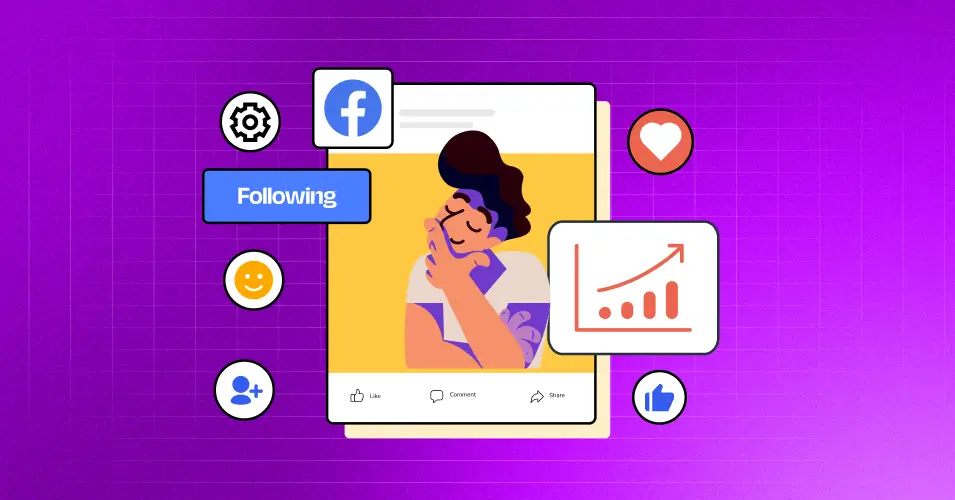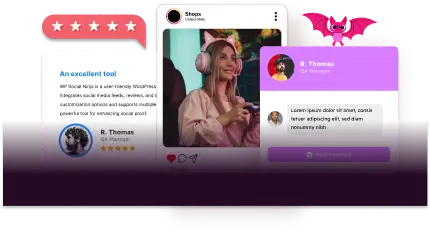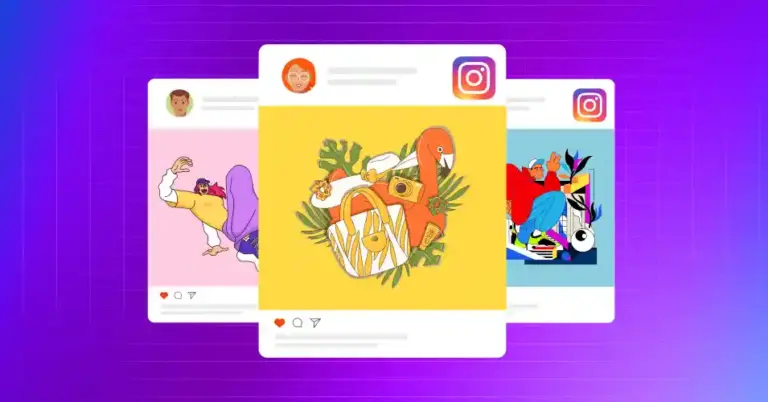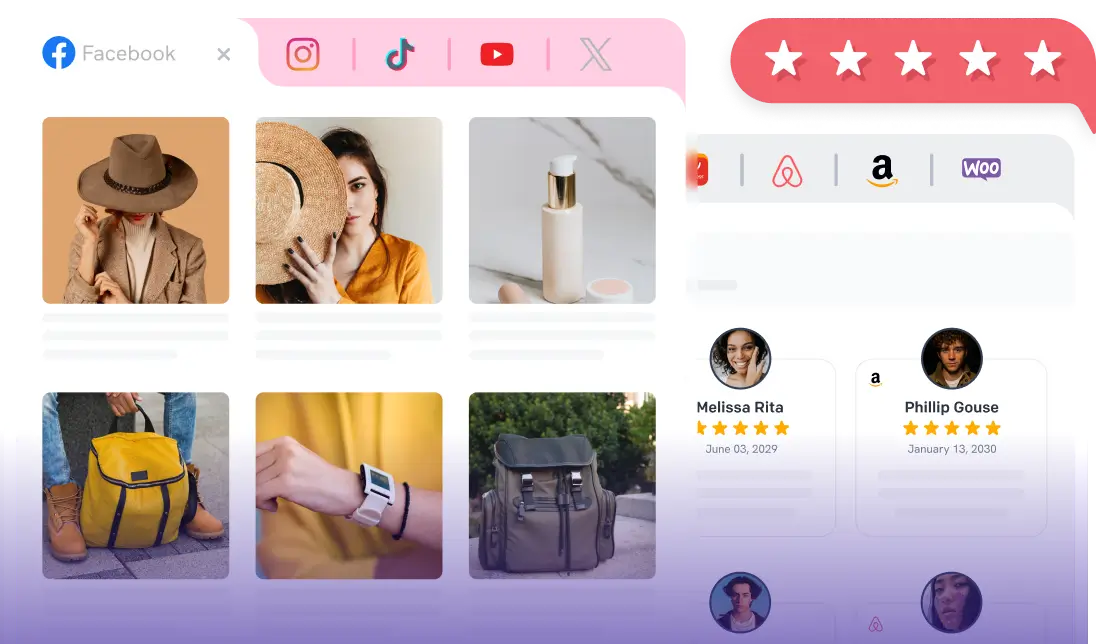
How Your Team Is Killing Your Facebook Algorithm Engagement (And How to Fix It)
SHARE :



You post something new on Facebook. Within minutes, it starts getting likes. Your team is doing their part, engaging quickly to help “boost” the post.
But hours later… nothing.
No real traction. No meaningful reach from your actual audience in Eastern Europe, Australia, or even Canada. Just a few more local impressions, maybe some reactions from the same 6 faces.
You start to wonder: “Are we doing something wrong?”
Here’s the twist: Yes, but not in the way you think.
The well-meaning mistake many product teams make
Let me tell you about a real example.
A small but growing WordPress plugin team, based in USA, markets their product primarily to users in Europe, Australia, or Southeast Asia. Like many smart teams, they use content to build awareness: regular Facebook posts, new feature rollouts, blog links, product promos.
They used to ask everyone on the team to engage with every new post. Like it. Drop a comment. Share it.
Classic algorithm warm-up tactic, right?
But then, something weird started happening:
Their reach dropped outside their region, especially in the markets that actually matter. Paid boosts showed weak CTRs in target countries. Comments were coming in, but mostly from team members or their local network.
Eventually, they realized something many businesses miss:
“The moment a post goes live, Meta starts learning. And those early reactions? They shape where your content goes next.”
And since all of it came from the wrong region… the algorithm thought the post belonged in the wrong region.
Bonus Tips: Follow these easy, simple, and effective Facebook networking tips to grow your brand the right way.
Meta’s algorithm is fast but not that smart
Facebook (and Instagram, same engine underneath) doesn’t just measure how many people engage.
It looks closely at who engages and what that tells it about your content.
Meta’s ranking system analyzes:
- Where your early engagers live
- What kind of content they normally engage with
- Who they’re connected to
- How often they interact with your brand
From that, it builds a prediction engine.
“If Person A likes this post, people like Person A probably will too.”
So if your team based in USA is always first to engage, and they’re connected to others in the same network, the algorithm assumes your content is for that audience.
But if your actual buyers are in Eastern Europe, Australia, or Southeast Asia? They may never even see it.
Pro Tips: Discover the most interactive Facebook post ideas to make your audience engage with you more meaningfully.
How geo-mismatch slowly chokes your organic reach
This problem doesn’t just show up once. It compounds.
Every time you repeat the pattern:
- You teach the algorithm that USA is your core audience
- You drown out the engagement from targeted followers (if they even see it)
- Facebook starts pre-serving your next posts to that regional group
And here’s the kicker: when your actual audience doesn’t see or interact, the algorithm thinks your content doesn’t work, so it dials down future reach.
Even the best-written, best-designed content falls flat because it’s being served to the wrong people.
It’s like handing out vegan samples at a BBQ festival and wondering why no one bites.
“But we boost posts. Doesn’t that fix it?”
You’d think that paid reach solves this.
And yes, paid ads let you target more precisely. But boosting a post after it’s been engaged with by the wrong crowd can actually carry those social signals into the ad.
Here’s how:
Boosted posts often carry over likes and comments. And if those are all from the wrong geo or your internal team, it sets the wrong tone.
If your ad settings include “people who like your page and their friends,” and your page is loaded with local followers, you’re now paying to show the post to more of the wrong audience.
Meta’s ad algorithm also optimizes for cheap engagement unless you tell it otherwise. And that usually means non-target countries unless you restrict geography strictly.
So while paid can help, only if it’s set up cleanly and without relying on corrupted post signals.
The hidden impact on WordPress product marketing
If you’re in the WordPress ecosystem, this gets even more important.
WordPress products often:
- Serve a niche (like forms, support, automation, or communities)
- Have highly specific buyer personas (agencies, freelancers, small business owners)
- Sell globally but rely on conversion-heavy traffic from English-speaking countries
So if your post is being shown mostly to followers in the wrong regions, even if it gets likes, those interactions don’t translate into sales, installs, or even meaningful traffic.
And Meta doesn’t know the difference between a “high-value agency” and “someone with no purchase intent.” It just sees activity.
Which means you end up spending time, budget, and creative energy only for your post to reach people who were never going to buy anyway.
Bonus Tips: Explore the easiest and best way to embed a Facebook feed on any WordPress website.
How to know if you’re caught in the geo loop
Use this quick checklist to find out:
Are your team members or in-house staff the first to like/comment on every post?
Do most of your Facebook or Instagram comments come from internal or regional followers?
Is your organic reach strongest in South Asia (or your home region), even though your customers are in North America or Europe?
Are your US/UK paid engagement rates dropping?
Do posts with lots of internal likes perform worse than those that didn’t get early engagement?
If you’re nodding at any of these, it’s time to pivot.
How to fix it (Without stopping team support Entirely)
Let’s make one thing clear: internal support isn’t bad.
But timing and targeting matter.
Here’s how to realign your engagement strategy so Meta’s algorithm gets smarter, not confused.
1. Post for your audience’s clock, not yours
If your target audience is in the US or UK, post when they are online. Not when your team is wrapping up the afternoon snacks.
Ideal slots:
- 9–11 AM EST
- 7–9 PM GMT
Use a scheduler (like Buffer or Meta Business Suite) and set posts to match your buyer’s active windows.
Bonus Tips: Find out the best time to post on social media so that your efforts reach to the right people at the right time.
2. Pause internal engagement for the first few hours
Train your team to wait at least 12 hours before engaging.
Let the algorithm gather early data from real customers. If they like, comment, or share, great. That’s a quality signal. Once that momentum builds in the right geo, then internal support won’t skew the reach.
3. Use audience controls on boosted posts
Never lump multiple countries into the same ad set.
Why?
Because Meta’s ad algorithm will find the cheapest engagement first. And that almost always means non-target countries.
On Meta Ads Manager, you can:
- Set a preferred audience group (e.g., users in Europe in one campaign and Australia in another)
- Restrict visibility to certain countries or languages
This is perfect for high-stakes content like:
- Product launches
- Promo offers
- Case studies
- Customer testimonials
It ensures that only your ideal customers see it first.
4. Audit your page audience
Over time, your Facebook Page may have built up likes from irrelevant or low-quality profiles. Especially if you’ve run global like campaigns or picked up vanity likes.
Consider:
- Cleaning up inactive/non-engaged users
- Focusing future growth efforts on high-value followers only
- Avoiding “page like” campaigns unless strictly geo-filtered
5. Start re-training the algorithm (Yes, you can)
The good news? As I said at the beginning, ‘Meta learns fast’ if you change the input.
To reset the algorithm’s understanding of your content:
- Use retargeting ads aimed at targeted visitors
- Post content directly addressing your ideal customers (“Calling all US freelancers…”)
- Run engagement campaigns strictly targeted to the right geo
Within 2–3 weeks of doing this consistently, you’ll start to notice:
- Higher organic reach in target countries
- Better comments from relevant profiles
- Paid campaigns becoming more efficient
What to say to your team instead
If your team’s been engaging with every post, it’s because they care. Don’t shut them down.
Instead, explain:
“We’re changing how we train the algorithm. For the first few hours after a post goes live, let’s hold off and let the audience lead. Once it gets momentum in the right market, then boost it with comments or likes.”
Most teams will get it, especially once they see reach and results improving.
Final word: If they’re not the buyer, their likes doesn’t help
This isn’t about being strict, it’s about being smart.
Meta’s algorithm isn’t malicious. It just reacts to the data it sees. If you train it with the wrong signals, it’ll give you the wrong results.
So stop letting internal engagement define your external reach.
Start letting your audience, your real customers, do the talking first.
Fix the first impression, and Meta will start showing your posts to the people who actually matter.
Want to fix this for good?
Start by reviewing your last 10 posts.
Who engaged first? Where are they located? How did those posts perform by country?
Then build a new routine using the playbook above.
You’ll be amazed how fast your reach realigns and how much better your content performs when it lands in the right newsfeeds.
Editorial Team
The WP Social Ninja Editorial team brings together expert insights, practical tips, and success stories from guest posts and our community. We share strategies on social media integration, customer engagement, and smart marketing to help businesses connect better and grow faster.

Subscribe To Get
Weekly Email Newsletter
Connect, Customize, and Display Social Feeds, Reviews, and Chat widgets















Leave a Reply